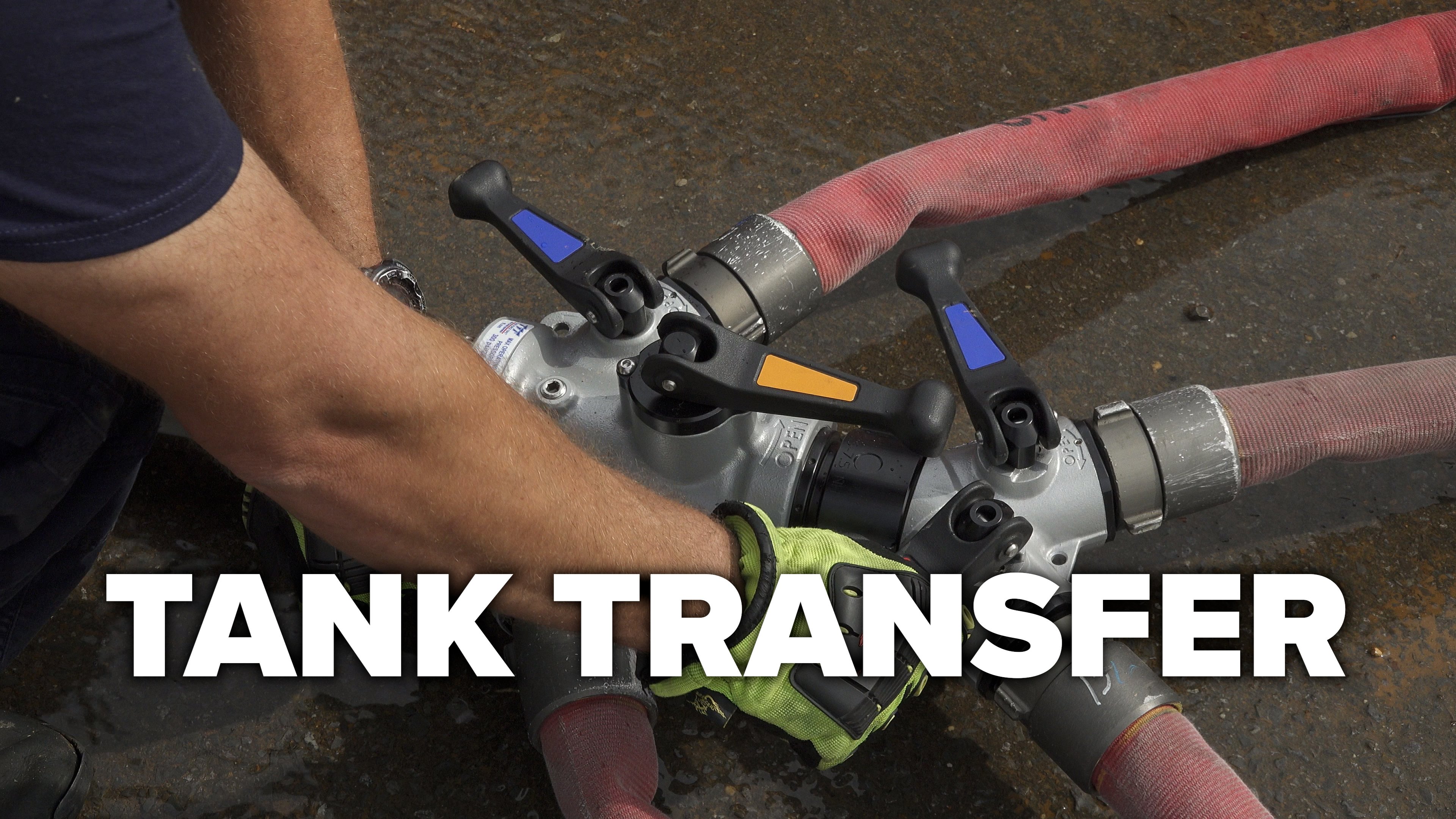Summary: Tank transfer operations help rural fire departments maintain a continuous water supply during extended incidents by efficiently moving water between portable tanks. Using jet siphons and proper suction setup, fire crews can sustain 500–600 GPM flows without additional pumps, avoiding water interruptions that can stall fire suppression. This tactic is essential when multiple tankers are delivering water or higher flow rates are needed.
Why Tank Transfers Matter When the Scene Heats Up
When water is coming in fast and fire conditions are escalating, the last thing a rural fireground needs is a bottleneck. Tank transfer operations keep water flowing smoothly from tankers to attack lines — especially when a single frame tank can’t keep up. By setting up a second tank and transferring water into the first, fire crews can build in more storage and buy time without losing supply.
Jet Siphons: Your Secret Weapon for Moving Water Fast
The heart of the tank transfer tactic is the jet siphon — a deceptively simple device that uses a pressurized water stream to create a Venturi effect. This pulls water from one tank and pushes it into another without needing a second pump. Jet siphons can move 500–600 gallons per minute on average, making them ideal for keeping up with high-demand fire attacks.
Step-by-Step: Setting Up a Tank Transfer
-
Fill the primary tank from incoming tankers and begin supplying the fire scene.
-
Deploy a secondary tank adjacent to the first once tanker flow exceeds usage or initial tank nears capacity.
-
Install jet siphon equipment — ensure suction hoses are fully submerged to prevent air entrainment.
-
Monitor flow rates and adjust suction setup as needed to sustain output.
-
Keep strainers clean — debris buildup can choke your transfer rate.
-
Plan for scaling up — if needed, add additional tanks and siphons to increase volume.
-
Maintain flow discipline — communication between dump site ops and the attack engine is critical.
Common Pitfalls — and How to Avoid Them
Air Entrapment: Make sure suction tubes are fully submerged and free of leaks.
Debris Blockage: Routinely check and clean low-level strainers.
Timing the Setup: Don’t wait until tanks are overflowing. Set up your second tank early when you anticipate extended operations or flow needs beyond rural hitch capacity.
When to Use Tank Transfer
Tank transfer is not for every rural fire — but it’s essential when:
-
Tankers are arriving faster than you can draft.
-
Flow demands exceed what one tank can deliver.
-
You’re prepping for long-duration or high-flow attacks.
-
Water shuttle operations are stretched across distance or time.
Real Talk from the Field
Henry Lovett, instructor with Water Supply Innovations, has seen it firsthand: “Tank transfer operations ensure a seamless water supply, vital for rural firefighting where water access is limited.” His tip? Don’t treat tank transfers as a backup plan. Train for them like your flow depends on it — because it does.
Whether you're supplying 250 or 1,250 GPM, knowing how and when to deploy tank transfer can mean the difference between a stop and a loss. Train it. Time it. And when it’s time, flow it right.



Comments